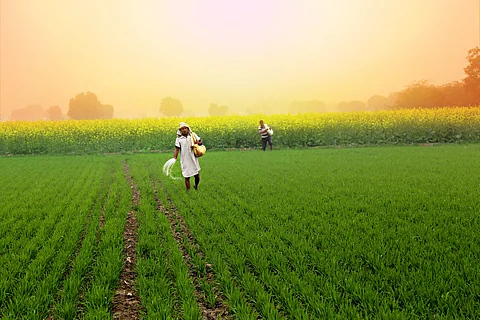

The total sowing Rabi crops has reached 6,610,300 hectares, which is higher than last year’s corresponding acreage of 6,514,200 hectares. On an average, it is more than 250,000 hectares above the normal acreage. However, mustard sowing remains a cause for concern.
On the brighter side, the area under wheat cultivation has seen a reasonable increase compared to last year. According to data released by the Ministry of Agriculture and Farmers' Welfare, by February 4, 2025, wheat had been sown across 3,243,800 hectares, compared to 3,183,300 hectares at the same time last year. The normal acreage for wheat is 3,123,500 hectares.
However, a recent warning from the India Meteorological Department has raised concerns among farmers. On January 31, 2025, the department announced that temperatures in February could be above normal.
It is noteworthy that in 2022, unexpected heat in February caused significant damage to wheat and several other crops. If similar conditions arise this year, wheat could be affected despite good sowing.
The ministry has also reported an increase in paddy cultivation during the Rabi season. This year, paddy has been sown in 425,400 hectares, which is more than last year's 405,900 hectares.
Pulses are another major crop in the Rabi season. This year, the area under pulses has also increased. Data shows that the total area for sowing pulses this year is 1,408,900 hectares, which is higher than last year's 1,378,000 hectares.
This includes chickpeas (985,500 hectares), lentils (174,300 hectares), peas (79,400 hectares), and urad (61,200 hectares). However, the normal area for pulses is around 1,400,000 hectares. Last year, sowing of pulses was lower.
There has been a reduction of 244,000 hectares in the area under chickpeas compared to last year. It is important to note that India is the largest consumer of pulses, and a decrease in production leads to greater dependence on imports. To control imports, the government is running a Pulses Mission, but its impact has yet to be seen.
According to ministry data, the area for growing millets and coarse grains has reached 552,500 hectares, with significant contributions from sorghum (243,500 hectares), maize (236,700 hectares), and barley (62,000 hectares). This is almost the same as last year.
The total area for sowing oilseeds has been recorded at 974,700 hectares, with mustard being the main crop at 893,000 hectares. However, last year, mustard was sown in 918,300 hectares.
In Tamil Nadu, the severity of pests (Black Headed Caterpillar) and diseases affecting coconuts has been found to be above the economic damage threshold. A survey team has issued advice to farmers on this matter, and regular monitoring is being conducted.